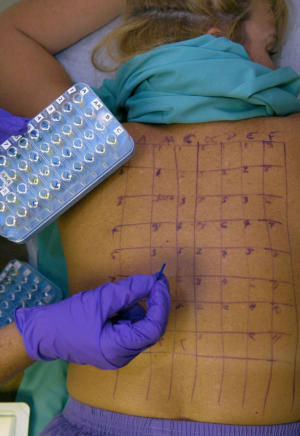If you search online for “food allergy testing,” you’ll find options including clinical visits with allergists and immunologists and do-it-yourself test kits that claim to deliver comprehensive results (with a 100 percent money-back guarantee!). Not all of the methods are equally reliable and some are downright fraudulent. There is no single test that will tell you exactly which foods to avoid. If a website, advertisement or practitioner claims to provide such a test, watch out. Take these steps instead.
Allergy or sensitivity?
It’s important to know the difference between a food allergy and a food sensitivity. Although the terms are often used interchangeably and symptoms may overlap, they are not the same. A food allergy is an immune system reaction that can cause hives, wheezing, itching, diarrhea, vomiting, shortness of breath and anaphylaxis. About 3.6 percent of Americans have food allergies, according to a 2017 Brigham and Women’s Hospital study.
Food sensitivity (sometimes called food intolerance) is a reaction that involves the digestive system, not the immune system. Symptoms include gas, bloating, nausea, vomiting and diarrhea. Although intolerances can be painful and uncomfortable, they are not life-threatening and are rarely as serious as true food allergies. Anywhere from 2 percent to 20 percent of Americans may be sensitive to certain foods – there are no precise numbers because there is no exact diagnostic test.
For a food allergy
If you suspect a food allergy, don’t self-diagnose or use at-home test kits. Food allergies are much too serious to assess without an expert. Your best bet is to work with a board-certified allergist, who will perform skin-prick tests and IgE blood tests to narrow down a diagnosis. (IgE, or immunoglobulin E, is a type of antibody produced by the immune system. More IgE is produced during an allergic reaction.) But keep in mind that even these tests may falsely show you are allergic to something.
“Both skin and blood IgE tests have high rates of false positive results so should never be used as ‘screening tests,’ ” says David Stukus, an allergist and associate professor in the division of Allergy and Immunology at Nationwide Children’s Hospital in Ohio. “Both skin-prick and blood test results must be interpreted in the proper clinical context and with a full understanding of what symptoms occur when that food is ingested. Both are reliable when used appropriately and interpreted in the proper context.”
You may hear alternative practitioners talk about diagnosing food allergies with tests such as hair analysis, IgG tests (which measure immunoglobulin G, another antibody produced by the immune system), facial thermography and muscle testing. It’s important to note that the National Institute of Allergy and Infectious Diseases’ Guidelines for the Diagnosis and Management of Food Allergy in the United States says these tests “lack evidence demonstrating any value in diagnosing food allergies.” They also can set you back a few hundred dollars each and you might endanger your health with inaccurate results.
The gold-standard food allergy test is an oral food challenge with your allergist, which may be done in conjunction with IgE and skin-prick tests. For the challenge, you will eat small amounts of the suspected allergen and watch for a reaction in the safety of the doctor’s office (with antihistamines and epinephrine on hand in case of serious reactions).
“Diagnosing food allergies is complicated and requires someone with proper training to obtain a detailed clinical history and interpret test results,” Stukus says.

